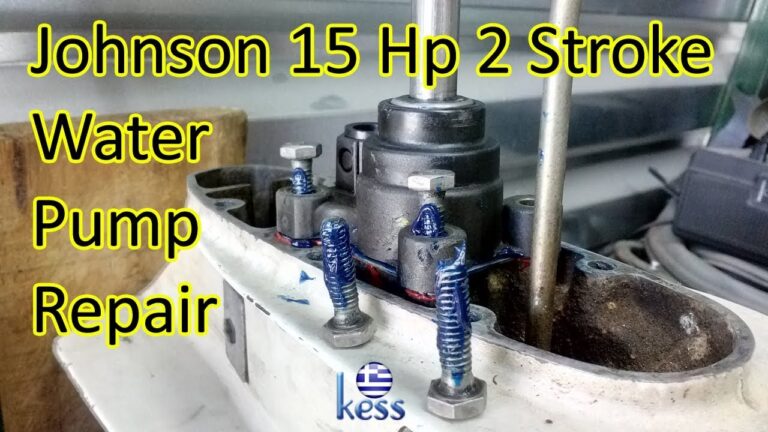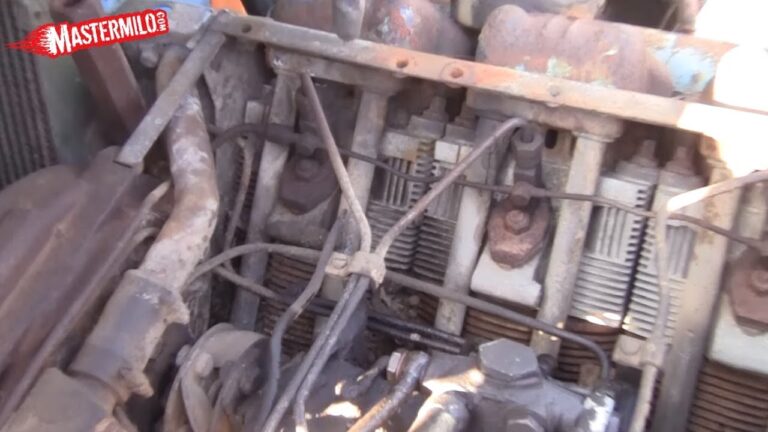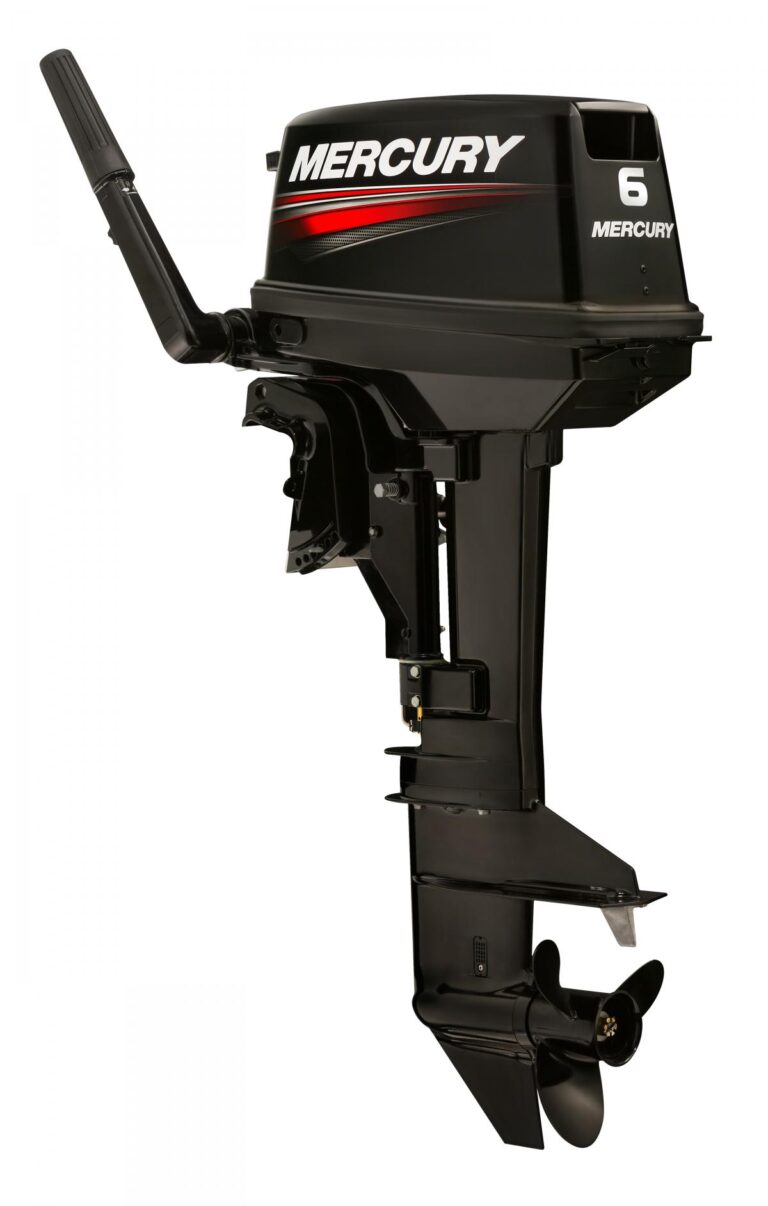Battery Maintenance And Care for Sailboats
Battery maintenance and care for sailboats is crucial for ensuring optimal performance and longevity. It is important to fully disconnect marine batteries during periods of inactivity to prevent drain and preserve battery life.
Regular cleaning and securing of battery terminals, as well as proper storage for winter, are also key aspects of battery maintenance.
Introduction To Battery Maintenance For Sailboats
Learn essential tips and techniques for battery maintenance and care on sailboats. Discover how to clean and secure battery terminals, check electrolyte levels, and properly store your boat battery. Ensure the longevity and reliability of your sailboat’s battery with these expert guidelines.
Importance Of Regularly Maintaining Boat Batteries:
- Regular maintenance of boat batteries is crucial to ensure their optimum performance and longevity.
- Neglecting battery maintenance can lead to various issues such as decreased battery lifespan, reduced power output, and potential safety hazards.
- Regular maintenance helps to prevent battery failure, which can leave you stranded in the water and compromise your safety.
- By performing routine maintenance tasks, you can identify and rectify any potential issues before they become critical, saving you time and money in the long run.
How Battery Maintenance Impacts Boat Performance And Safety:
- Proper battery maintenance directly impacts the overall performance of your sailboat.
- A well-maintained battery ensures a reliable power source for various essential systems on your sailboat, including the navigation equipment, communication devices, and lighting.
- Regular maintenance helps prevent voltage drops and ensures consistent power delivery, which is crucial for the efficient operation of your boat’s electrical systems.
- Neglecting battery maintenance can lead to battery corrosion, which can negatively affect the overall efficiency of the electrical system and compromise your boat’s safety.
- Routine maintenance also includes monitoring battery fluid levels, which helps prevent overcharging or undercharging, ensuring optimal performance and preventing potential safety hazards.
The Relevance Of Proper Battery Care In Sailboats:
- Sailboats heavily rely on battery power, making proper battery care essential for their smooth operation.
- Sailboats often have limited charging options, so maintaining batteries in excellent condition becomes even more crucial.
- Proper battery care ensures that your sailboat has a reliable power source for extended periods, allowing you to enjoy long journeys without worrying about battery failure.
- Regular maintenance also helps maximize the battery’s lifespan, reducing the need for frequent replacements and saving you money.
- By adhering to proper battery care practices, you can enhance the overall efficiency and reliability of your sailboat, providing peace of mind and ensuring a safe and enjoyable boating experience.
Remember, regular battery maintenance is key to keeping your sailboat’s electrical system running smoothly and ensuring your safety on the water. By following proper care practices, you can extend the lifespan of your batteries, enhance boat performance, and enjoy uninterrupted power supply during your sailing adventures.
Understanding Boat Batteries
Proper battery maintenance and care is crucial for sailboats, ensuring optimal performance and longevity. Learn how to clean terminals, check electrolyte levels, and store your boat battery for winter in this informative guide.
Boat batteries are essential for powering various electrical components on sailboats. Understanding the different types of batteries commonly used, their differences, and how to determine the optimal battery capacity for your sailing needs is crucial for proper battery maintenance and care.
Types Of Batteries Commonly Used In Sailboats:
- Lead-Acid Batteries: These are the most common type of batteries found in sailboats due to their durability and affordability. They are available in two variants – flooded lead-acid (FLA) and sealed lead-acid (SLA) batteries.
- AGM Batteries: Absorbent Glass Mat (AGM) batteries are a type of sealed lead-acid battery. They are maintenance-free, spill-proof, and provide excellent shock and vibration resistance, making them an ideal choice for sailboats.
- Gel Batteries: Gel batteries are another type of sealed lead-acid battery. They use a gel-like electrolyte that is immobilized, offering improved resistance to deep discharges and longer lifespan compared to other battery types.
Differences Between Deep Cycle And Cranking Batteries:
- Deep Cycle Batteries: Deep cycle batteries are designed to deliver a steady amount of power over an extended period. They are ideal for powering house systems on sailboats, such as lights, refrigeration, and navigational equipment.
- Cranking Batteries: Cranking batteries, also known as starting batteries, are designed to provide a high burst of power for short durations. They are primarily used to start the engine and require less capacity compared to deep cycle batteries.
Optimal Battery Capacity For Sailing Needs:
- The optimal battery capacity for sailing needs depends on factors such as the size of your boat, the power requirements of your electrical equipment, and the duration of your sailing trips.
- It is recommended to calculate your daily power consumption and multiply it by the number of days you plan to be on the water. Add a safety margin to ensure you have enough power in case of unforeseen circumstances.
- Aim for a battery capacity that allows you to discharge the battery to around 50% to maximize its lifespan. Deeply discharging the battery regularly can significantly reduce its overall capacity.
- Consider using a battery monitor to keep track of your battery’s state of charge and avoid over-discharging or overcharging.
Maintaining and caring for your boat batteries will ensure reliable power supply during your sailing adventures. Understanding the different types of batteries, their differences, and determining the optimal battery capacity for your needs will contribute to the longevity and efficiency of your sailboat’s electrical system.
Battery Inspection And Cleaning
Maintain the health of your sailboat’s battery with regular inspection and cleaning. Ensure proper functioning and extend its lifespan by keeping the terminals clean and secure. Avoid potential power loss on your sails with proper battery maintenance and care.
Visual Inspection Of Battery Terminals And Connections:
- Inspect battery terminals and connections regularly for any signs of damage or wear.
- Look for loose or corroded terminals, frayed wires, or any other visible issues.
- Check that the terminals are securely attached to the battery posts.
Removing Corrosion And Buildup From Terminals:
- If you notice any corrosion or buildup on the battery terminals, it’s important to remove it promptly.
- Use a wire brush or battery terminal cleaner to gently scrub away the corrosion.
- Be careful not to damage the terminals or surrounding components while cleaning.
Using A Suitable Cleaner For Battery Cleaning:
- Choose a battery terminal cleaner specifically designed for removing corrosion and buildup.
- Avoid using water or household cleaning products, as they can potentially damage the battery or its terminals.
- Follow the instructions on the cleaner bottle for proper application and use.
Ensuring Proper Reinstallation Of Terminals And Connections:
- After cleaning, make sure to reattach the terminals and connections securely.
- Place the terminals back onto the battery posts, ensuring a tight and secure fit.
- Tighten any screws or bolts that hold the terminals in place.
- Avoid over-tightening, as it could damage the terminals or the battery.
By regularly inspecting and cleaning your battery terminals and connections, you can maintain the health and performance of your sailboat’s battery. Keep an eye out for any signs of damage or corrosion, and address them promptly to prevent further issues.
Using the right cleaner and properly reinstalling the terminals will help ensure a reliable power source for your sailboat.
Battery Charging And Discharging
Proper battery maintenance and care are essential for sailboats. Regularly charging and discharging the battery, as well as cleaning battery terminals and checking electrolyte levels, can help keep the battery in optimal condition for reliable performance on the water.
Understanding The Ideal Charging Voltage For Sailboat Batteries:
- The charging voltage for sailboat batteries plays a crucial role in maintaining their health and prolonging their lifespan. Here’s what you need to know:
- Sailboat batteries typically have a voltage rating of 12 volts, although some boats may use a 24-volt system.
- The ideal charging voltage for these batteries is between 13.6 to 14.4 volts. This range ensures efficient charging without risking overcharging.
- It’s important to note that charging a sailboat battery at a voltage higher than 14.4 volts can lead to overcharging, while charging below 13.6 volts may result in undercharging.
Techniques For Prolonging Battery Life Through Correct Charging:
To ensure optimal battery performance and extend their lifespan, follow these techniques for correct charging:
- Use a smart charger: Investing in a smart charger with built-in voltage regulation and safety features can help maintain the ideal charging voltage for your sailboat batteries.
- Charge at the right time: Avoid letting your batteries discharge too much before recharging them. Regularly charge your batteries before they drop below 50% of their capacity.
- Avoid fast charging: While it may be tempting to charge your batteries quickly, fast charging can shorten their lifespan. Opt for a slow and steady charging process to maintain battery health.
- Disconnect unnecessary loads: Before charging your sailboat batteries, disconnect any unnecessary loads like lights or electronics to reduce the strain on the charging system.
- Maintain clean connections: Ensure that the battery terminals and connections are clean and free of corrosion. Dirty connections can interrupt the charging process and affect battery performance.
Properly Discharging Batteries To Maintain Performance:
Properly discharging your sailboat batteries is essential for maintaining their performance and preventing premature failure. Here’s how to do it right:
- Avoid deep discharges: Deeply discharging your batteries regularly can shorten their lifespan. Aim to minimize deep discharges by recharging them before they reach critical levels.
- Utilize a battery monitor: Installing a battery monitor on your sailboat allows you to monitor the charge level accurately. This will help you avoid discharging your batteries below recommended levels.
- Implement cycling: Periodically cycling your batteries through a full charge and discharge cycle can help improve their overall performance and longevity.
The Impact Of Overcharging And Undercharging On Battery Health:
Both overcharging and undercharging can have detrimental effects on the health of your sailboat batteries. It’s important to understand their impact to ensure proper maintenance:
- Overcharging: Exposing your batteries to excessive charging voltages or prolonged charging can lead to overcharging. Overcharging can cause the battery to overheat, emit toxic gases, and significantly reduce its lifespan.
- Undercharging: Not fully recharging your batteries after use can result in undercharging. Undercharging can lead to sulfation, a process where sulfate crystals build upon the battery plates, diminishing its capacity and overall performance.
By understanding the ideal charging voltage, employing correct charging techniques, and properly discharging your sailboat batteries, you can ensure their longevity and maximize their performance. Avoid overcharging and undercharging to maintain your batteries in peak condition for years to come.
Storing Batteries During Winter
Proper winter storage of batteries is crucial for maintaining the health and longevity of sailboat batteries. Take care to clean and secure battery terminals, inspect electrolyte levels, and store the batteries in a cool and dry location to ensure optimal performance when spring arrives.
Preparing Batteries For Winter Storage:
To ensure your boat batteries stay in optimal condition during the winter months, it’s important to take proper care and preparation. Here are some essential steps to follow:
- Disconnect the batteries: Start by disconnecting the batteries from all electrical systems on your sailboat. This includes removing any wire connections and disconnecting the negative (-) and positive (+) cables.
- Clean the batteries: Thoroughly clean the batteries to remove any dirt, grime, or corrosion. Use a mixture of baking soda and water to scrub the battery terminals and cables. Rinse with clean water and dry the batteries thoroughly before storage.
- Check the water levels: If you have flooded or wet cell batteries, check the water levels and top them off as needed. Use distilled water for refilling and ensure the plates are covered, but don’t overfill. This step is crucial to prevent the batteries from drying out during storage.
- Inspect for damage: Take a close look at the batteries for any signs of damage or leakage. If you notice any cracks, swelling, or other abnormalities, it’s best to replace the batteries to avoid any potential hazards.
Recommended Storage Conditions For Boat Batteries:
Proper storage conditions play a vital role in maintaining the longevity of your boat batteries. Here are some recommendations to follow:
- Choose a cool and dry location: Store your batteries in a cool and dry place where the temperature remains consistent. Extreme heat or cold can negatively impact battery performance and shorten their lifespan.
- Avoid direct sunlight: Keep your batteries away from direct sunlight, as prolonged exposure can cause them to overheat and degrade faster.
- Use a battery storage box: Consider using a battery storage box or tray to keep your batteries secure and protected. This helps prevent accidental damage and provides an additional layer of insulation.
- Store in an upright position: It’s essential to store your batteries in an upright position to prevent any acid leakage. This also helps maintain proper electrolyte levels within the battery cells.
Preventing Battery Self-Discharge During The Offseason:
Batteries can self-discharge over time, even when not in use. To prevent this from happening during the offseason and ensure that your batteries are ready to go when spring arrives, follow these steps:
- Charge the batteries before storage: Fully charge your batteries before placing them in storage. This helps counteract self-discharge and ensures they’re ready for use when boating season starts again.
- Regularly check the charge: Periodically check the batteries’ charge level during the offseason. If the charge drops below a certain threshold, use a trickle charger or a battery maintainer to keep the batteries topped up.
- Disconnect batteries from the charger when fully charged: Once the batteries reach a full charge, disconnect them from the charger to prevent overcharging. Overcharging can cause damage to the batteries and shorten their lifespan.
- Consider using a battery maintainer: If you have access to an electrical outlet near your boat storage area, using a battery maintainer can help keep your batteries at an optimal charge level throughout the offseason. These devices automatically adjust the charge to prevent overcharging and self-discharge.
By following these battery maintenance and storage tips, you can ensure that your sailboat batteries remain in excellent condition during the winter months and are ready to power your adventures when the boating season returns.
Troubleshooting Battery Issues
Learn effective battery maintenance and care techniques for sailboats with this helpful troubleshooting guide. Discover how to properly clean, test, and charge your boat’s battery to ensure optimal performance and longevity on the water.
When it comes to sailboats, battery issues can be a common occurrence. However, with proper troubleshooting techniques, you can quickly identify and resolve these problems. In this section, we will explore the most common battery problems and their causes, how to test battery voltage and capacity, replacing faulty batteries in sailboats, and tips for preventing battery issues in the future.
Common Battery Problems And Their Causes:
- Battery not holding a charge: This issue may occur due to sulfation, poor battery maintenance, or old age. Sulfation is the buildup of lead sulfate crystals on the battery plates, which reduces its ability to hold a charge.
- Low voltage: Low voltage can be caused by a faulty battery, a discharged battery, or a problem with the charging system. Poor connections or a malfunctioning alternator can also contribute to low voltage.
- Corroded terminals: Corrosion on battery terminals can hinder the flow of electricity and cause poor battery performance. This can be caused by exposure to moisture and other contaminants.
Testing Battery Voltage And Capacity:
- Use a voltmeter: A voltmeter is a handy tool for measuring battery voltage. Simply connect the voltmeter’s positive lead to the battery’s positive terminal and the negative lead to the negative terminal. A fully charged battery should read around 12.6 volts.
- Load testing: Load testing helps determine the capacity of the battery. Apply a load to the battery while monitoring its voltage. A healthy battery will maintain a stable voltage under load.
Replacing Faulty Batteries In Sailboats:
- Inspect the battery: Before replacing a battery, inspect it for any visible signs of damage or deterioration. Check for cracks, bulges, or leaking fluids. If the battery shows any signs of damage, it’s time to replace it.
- Choose the right replacement: When replacing a battery, ensure that you select the correct type, size, and capacity for your sailboat. Consult the manufacturer’s guidelines or seek professional advice if needed.
- Proper installation: Install the new battery following the manufacturer’s instructions. Make sure the connections are secure and free from corrosion. Use a battery terminal protectant to prevent future corrosion.
Tips For Preventing Battery Issues In The Future:
- Regular maintenance: Perform routine battery maintenance, including cleaning the terminals, checking fluid levels, and inspecting for any signs of damage. Clean the terminals using a mixture of baking soda and water, and apply a corrosion inhibitor.
- Avoid deep discharges: Deeply discharging a battery can significantly reduce its lifespan. Avoid draining the battery to its absolute limits by using energy-efficient appliances and keeping an eye on power usage.
- Disconnect when not in use: If your sailboat is going to be idle for an extended period, consider disconnecting the battery to prevent parasitic drain. This will help preserve the battery’s charge.
- Use a battery monitor: Installing a battery monitor can provide real-time information on the battery’s voltage, capacity, and charging status. This allows you to proactively address any potential issues before they escalate.
By following these troubleshooting techniques and implementing preventive measures, you can ensure reliable battery performance on your sailboat. Remember to regularly inspect, test, and maintain your batteries to avoid any unwanted surprises while out on the water.
Best Practices For Battery Maintenance
Proper battery maintenance and care are crucial for sailboats. Learn how to clean and secure battery terminals, check electrolyte levels, and store batteries during winter to keep your boat’s batteries in optimal condition.
Maintaining A Regular Battery Maintenance Schedule:
- Create a consistent battery maintenance schedule to ensure optimal performance and longevity.
- Check the battery connections regularly to ensure they are secure and free of corrosion.
- Inspect the battery for any signs of wear or damage, such as cracks or bulges.
- Clean the battery terminals with a wire brush to remove any corrosion.
- Test the battery voltage regularly to monitor its health.
- Charge the battery as needed to maintain a full charge.
Using Battery Monitoring Systems For Sailboats:
- Install a battery monitoring system to keep track of battery voltage, current, and temperature.
- Monitor the battery bank’s state of charge to prevent overcharging or deep discharging.
- Utilize alarms and alerts provided by the monitoring system to stay informed about battery status.
- Use the data from the monitoring system to optimize battery usage and extend its lifespan.
Proper Disposal Of Old Batteries:
- Dispose of old batteries in an environmentally responsible manner.
- Check with local recycling centers or battery retailers for proper battery disposal options.
- Be mindful of the chemicals and potential hazards associated with batteries and handle them safely.
- Do not dispose of batteries in ordinary trash bins.
Additional Tips For Extending Battery Life:
- Avoid overcharging the battery by using a charger with an automatic shut-off feature.
- Limit the use of power-hungry devices when the battery charge is low.
- Store batteries in a cool, dry place to prevent deterioration.
- Disconnect the battery when the sailboat is not in use for an extended period.
- Consider investing in solar panels or other alternative charging methods to reduce reliance on the battery.
Following these best practices for battery maintenance will help ensure a reliable power source for your sailboat and extend the lifespan of your batteries. Regular maintenance, monitoring systems, proper disposal, and additional tips all play a crucial role in keeping your batteries in optimal condition.
Implement these practices to enjoy uninterrupted adventures on the water.

Credit: www.discoverboating.com
Frequently Asked Questions Of Battery Maintenance And Care For Sailboats
How Do I Keep My Boat Battery Healthy?
S is to disconnect them completely to keep them healthy and prevent power loss.
Should I Disconnect My Boat Battery When Not In Use?
Your boat battery is to disconnect it completely.
Should I Charge My Marine Battery After Every Use?
You do not need to charge your marine battery after every use. However, it is important to fully disconnect marine batteries during periods of extended inactivity to prevent slow energy draining.
Do Marine Batteries Require Maintenance?
Marine batteries should be disconnected when not in use to prevent energy drain during periods of inactivity.
Conclusion
E your boat battery is by keeping it in a cool, dry place and periodically charging it to maintain its charge. Regular maintenance and care will extend the lifespan of your boat battery, saving you money in the long run.
When it comes to battery maintenance, remember to clean the terminals regularly to prevent corrosion, check the electrolyte levels, and top up with distilled water as needed. Additionally, ensure that all connections are secure and tight. Proper storage during the off-season is crucial to maintaining the health of your boat battery.
Disconnecting the battery when not in use is highly recommended to prevent any unnecessary drain on its power. By following these simple steps, you can ensure that your boat battery remains in optimal condition for many sailing adventures to come.







